Clothing
Personal clothing should be appropriate to the expected conditions, and should include windproof and waterproof clothing.
Avoid cotton, although comfortable off the water, when wet it offers no insulating value and is very slow to dry. Instead, wear synthetic fibres, like polypropylene and polyester, which keep their insulating value when wet and are quick to dry (although they can get stinky) As with many outdoor activities, you’ll want to use the "layer system," wearing multiple thin layers of clothing rather than one or two thick layers. Avoid wearing bulky clothing that will reduce your ability to move safely when wet.
When paddling spring run-off, or getting in a last play session late in autumn, plan for the "worst case scenario" by wearing a dry-top or dry-suit, and/or a neoprene wet suit that will help prevent hypothermia in the event of an unplanned swim.
Dry Suit
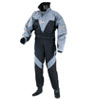
Available in one and two piece versions, a dry suit uses water tight gaskets at the neck, wrist and ankles to keep you dry. A dry suit’s impermeable outer fabric does little to help insulation, instead allowing you to comfortably wear several insulating layers underneath. When the weather gets warmer, many paddlers switch to just a drytop to keep their upper torso and their kayak dry.
Wetsuit
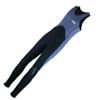
Available in full suit, shorty and "long john" styles, a wet suit is composed of a flexible 3mm or 4mm neoprene that works by allowing a thin layer of water between your skin and the neoprene. This layer of water is warmed by your body heat and helps fend off hypothermia. Key to the proper function of a wet suit is fit. It should be neither so tight that it causes the reduction of circulation near the skin, nor too loose that water flows freely in and out.
Dry Cag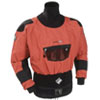
Dry cags use water tight gaskets at the neck, wrist with a neoprene waist seal to keep their upper torso and their kayak dry. A dry cag’s impermeable outer fabric does little to help insulation, instead allowing you to comfortably wear several insulating layers underneath.
Semi Dry Cag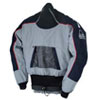
This garment gives a similar level of protection as a dry cag however is less effective at stopping water getting in. Excellent during the summer.
Rash vest
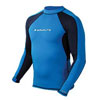
Rash vests are made from synthetic fibres that keep their insulating value when wet and are quick to dry. They are thin and allow easy manoeuvrability. Two or more layers can be worn during colder months.
Thermal socks
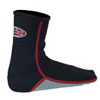
Oh yeah, feet and hands are the first things to get cold and give you discomfort. These neoprene socks work well by heating up a small amount of water between foot and sock.
Scull Cap
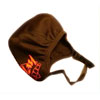
Ultra important when the conditions get cold and helps avoid heat loss through your head preventing painful "ice cream" head caused by rolling in cold water.
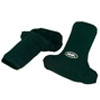
When the weather outside gets cold, neoprene gloves become indispensable. Working like a neoprene wet suit, they allow a thin layer of water to become an insulator between your hands and the cold. Fit should not be too tight nor too loose.
Poggies are great for protecting your hands from a cold wind while also allowing normal contact with your paddle. Their insulating design, attached directly to the paddle, letting your hands exit easily.
Footwear
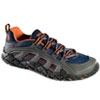
Wearing a closed-toe river shoe, with a good sticky tread surface is essential for safe scouting and portaging. More than helping keep your feet warm, these shoes grant you grip on the damp rock surrounding the river, and help with traction in the event of a swim.




